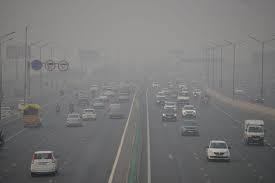The Indian capital is grappling with severe air pollution, as the Air Quality Index (AQI) soars to 428, marking extremely unhealthy conditions for residents. Anand Vihar, one of the city’s monitoring stations, reported the alarming AQI levels, signaling serious health risks, particularly for vulnerable groups.
Causes of Hazardous Pollution
Authorities cite multiple factors driving Delhi’s deteriorating air quality:
- Post-Diwali Firecracker Emissions: Festive celebrations have released large quantities of particulate matter into the atmosphere.
- Stubble Burning: Crop residue burning in neighboring states continues to contribute significantly to airborne pollutants.
- Stagnant Atmospheric Conditions: Calm weather traps pollutants close to the ground, preventing dispersion.
Fine particulate matter, including PM2.5 and PM10, has surged, intensifying health risks for children, the elderly, and individuals with preexisting respiratory conditions.
Health Advisories and Precautions
“The air quality in Delhi is extremely hazardous. People are advised to limit outdoor activities and use masks or air purifiers where possible,” said a spokesperson from the Central Pollution Control Board (CPCB).
Residents are urged to avoid unnecessary travel, and schools and outdoor workplaces have been advised to implement safety measures. Prolonged exposure to such pollution levels can lead to respiratory illnesses, cardiovascular problems, and long-term health complications.
Government Measures and Environmental Concerns
The government has implemented measures to curb emissions, including:
- Restricting construction dust and industrial pollutants
- Limiting vehicular traffic in sensitive zones
- Encouraging eco-friendly practices among citizens
Despite these efforts, ongoing crop residue burning in neighboring states continues to worsen the situation. Environmentalists stress the need for long-term solutions such as sustainable urban planning, clean energy adoption, and stricter enforcement of anti-pollution regulations.
Conclusion
With Delhi entering its peak pollution season, the hazardous AQI levels underscore an urgent call for coordinated action. Reducing emissions, adopting sustainable practices, and protecting public health remain top priorities as the city navigates its ongoing air quality crisis.

